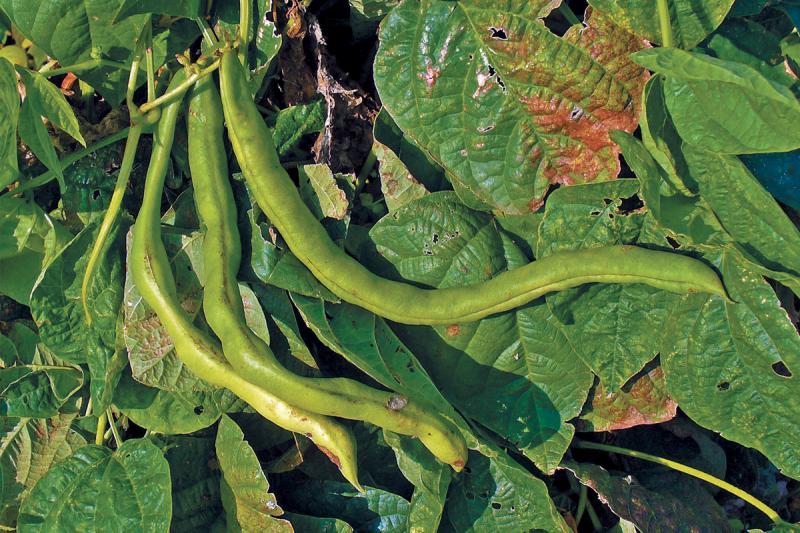Summer approaches and it is time to readjust, rejuvenate and rearrange the garden. In English pretty much any word beginning with “re” means again. So perhaps to reinvigorate us we can fire up on refried beans. Except that refried beans are never “fried again.”
Refried beans is a direct and somewhat inaccurate translation of the term “frijoles refritos.”
It simply means well cooked, not fried again. That's because Mexicans use “re” to qualify a word for emphasis. So the cooking oil is very hot or “equemar” so that the beans taste very delicious or “retebien.”
So once cooked not refried, refried beans are outstanding in Mexican and American Tex-Mex cuisine. Refried beans are traditionally made with pinto beans, but any small dried bean can be used, such as kidney beans or black beans.
Growing dried beans is easy. Just wait until the soil has thoroughly warmed, and all danger of frost is past. Luckily beans do not require very fertile soil and indeed capture nitrogen from the atmosphere and convert it into nitrogen fertilizer.
One of the best traditional beans, the pinto is available as a dwarf plant with few runners. This is the Agate Pinto Dry Bean, Phaseolus vulgaris. It will produce medium-sized beans with a pinkish mottled skin. Agate Pinto beans have an almost spicy flavor that holds up well in cooking. Their big advantage in the garden is that the naturally dwarf bush plants send out few if any long vines or runners. One in about 20 Agate Pinto bushes will sprawl a bit, especially if grown in rich soil.
The familiar kidney bean is available in many shades of red with some arguing that light is better than dark red, and other growers arguing the opposite. Red kidney beans, Phaseolus vulgaris grow on short bush- type plants. They are great for refried beans and popular in chili or bean salads.
For a dark, deep plate of refried beans try growing Black Turtle Dry Bean (Phaseolus vulgaris). This jet-black, small, round bean is popular for refried beans, and famous mixed with rice for a Cuban dish called Morros y Cristianos, “Moors and Christians.” In addition to refried beans, you can cook black beans into a thick black bean soup or a spicy dip.
To grow any of these beans, sow seeds about four inches apart in rows two feet apart. Avoid nitrogen-rich fertilizer or you may end up with lush foliage and few beans. Like all legumes, beans will benefit greatly if you can introduce or vaccinate the seeds with a nitrogen-fixing bacteria before planting. These are sold wherever you buy your seeds.
Beans can fall prey to fungal diseases such as blight. To keep disease from spreading, remove any dead or diseased plants immediately and keep the bean patch free of debris. Avoid walking in the bean plants after a rain or during damp weather to prevent spreading fungal diseases. To avoid soil-borne diseases plant beans in a different spot in the garden every year, rotating them so that they do not grow in the same place more often than once every three years.
Your dry beans should be ready to pick in 90 to 120 days depending upon the weather and which variety you grow. To harvest dry beans, let the pods dry on the vine until the seeds are so firm that they cannot be dented with a fingernail. Pick the pods and shell the beans for storage. You can also pull up the entire plants, roots and all, and hang them in a garage, shed or cellar anyplace out of the elements to dry. Fully dry bean pods will split open easily when shelled.
If you have 120 days before your next killing frost you can easily grow dry beans.
Cooked dry beans give you a nutritional low-fat dish full of protein and fiber. Mashed into refried beans you will have a meal that will refresh, rejuvenate, and return you to health as you reflect upon retiring to the garden.
Your refried beans will not by any means have been fried twice.





















































